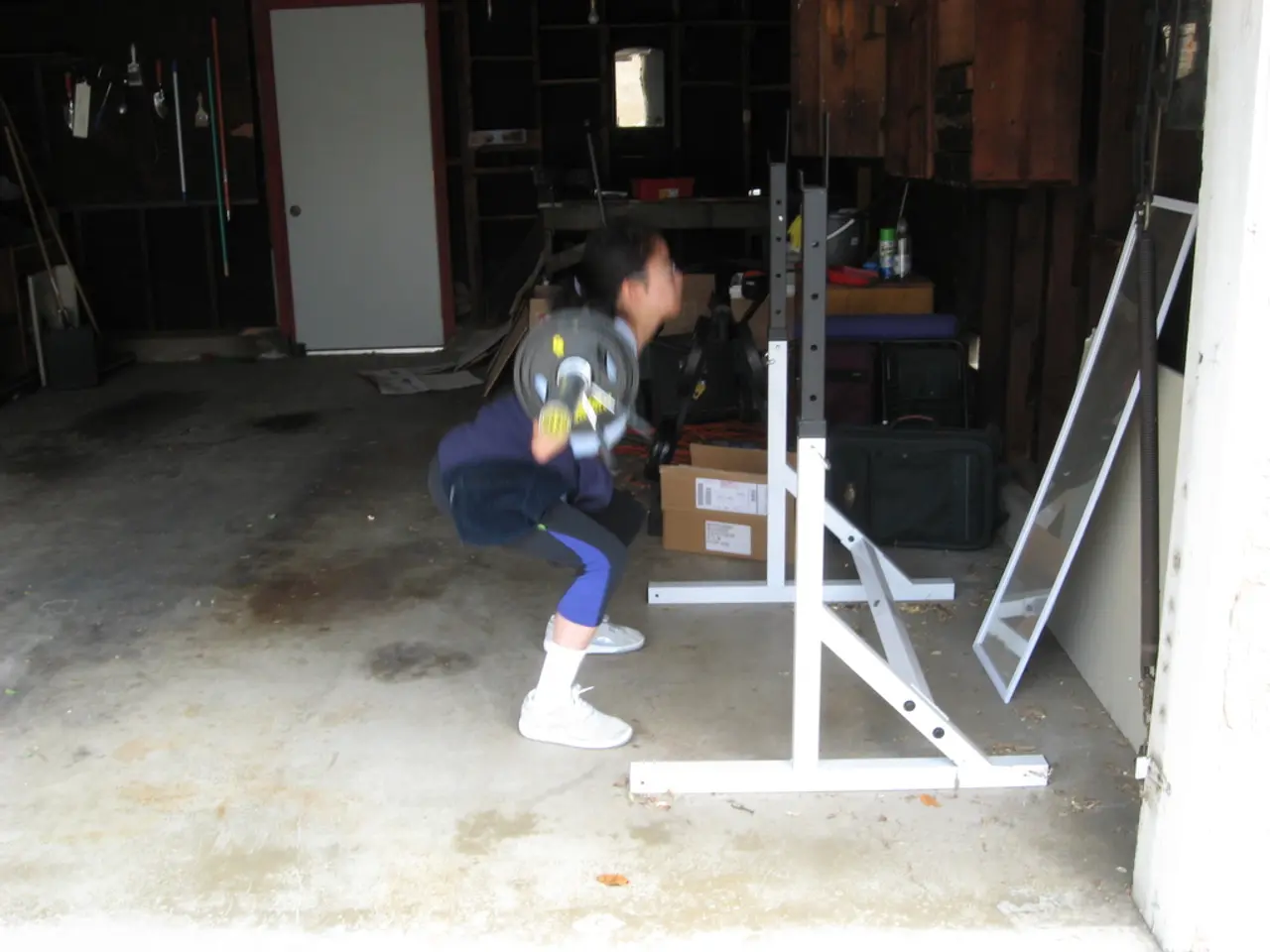Unveiling Three Body Weight Exercises to Uncover Your Real Physical Age Beyond Forty Years
Staying fit and active as you age is crucial, and for men over 40, understanding your current strength and endurance levels can be a game-changer. Here's a look at three bodyweight tests that provide a comprehensive snapshot of your upper-body strength, core stability, and lower-body endurance – all key factors that can decline with age but are essential for functional fitness.
Max Push-Ups
The Max Push-Up test measures upper-body strength and endurance, challenging the chest, shoulders, triceps, and core while maintaining full-body stability. A strong push-up count indicates resilient upper body strength. To perform the push-up test, start in a high plank, lower your chest nearly to the floor, and press back without letting your hips sag. An excellent score is 40 reps, a good score is between 25 and 39 reps, and a score under 25 indicates a need for improvement.
Max Plank Hold
The Max Plank Hold test is all about core strength and endurance. It involves holding a plank position for as long as possible, reflecting core stability important for overall fitness. To perform the plank test, start on your forearms, extend your legs, keep your body in a straight line, and hold the position as long as possible without letting your hips drop or rise.
Max Bodyweight Squats in 60 Seconds
The Max Bodyweight Squats test assesses lower-body muscular endurance and mobility through the number of squats performed in one minute. To perform the squat test, stand with feet shoulder-width apart, push hips back, bend knees to lower into a squat, drop until thighs are at least parallel to the ground, and drive through heels to stand tall. An excellent score is 45 reps, a good score is between 30 and 44 reps, and a score under 30 indicates a need for improvement.
Ranking based on performance typically involves comparing your results in each test to normative data or fitness standards to estimate your "fitness age." Higher repetitions or longer hold times suggest a younger fitness age, indicating better physical condition in that area.
Incorporating stretches and mobility drills before and after training can help keep joints healthy and improve movement quality. Working within time frames (like max squats in 60 seconds) pushes endurance and power in bodyweight strength training. Scheduling rest days, getting enough sleep, and using active recovery methods like walking or light stretching help the body adapt in bodyweight strength training.
These tests are quick, require no equipment except your body, and together give a comprehensive snapshot of your fitness levels. They are particularly important for men over 40 as they reveal one's strength, mobility, and endurance. By understanding your fitness age, you can identify areas for improvement and take action to maintain or improve your physical abilities.
- Incorporating yoga, which emphasizes mindfulness and stretches, can help keep joints healthy and improve movement quality when performed before and after training.
- To challenge the chest, shoulders, triceps, and core while measuring upper-body strength and endurance, the Max Push-Up test requires performing as many push-ups as possible in a high plank position without letting hips sag.
- For core strength and endurance assessment, the Max Plank Hold test involves holding a plank position for the longest time possible, reflecting core stability essential for overall fitness.
- The Max Bodyweight Squats test assesses lower-body muscular endurance and mobility by performing as many squats as possible within 60 seconds, pushing endurance and power in bodyweight strength training.
- Science in health-and-wellness and fitness-and-exercise fields suggests that by understanding one's fitness age based on performance in bodyweight tests, men over 40 can identify areas for improvement and take action to maintain or improve physical abilities during the aging process.




